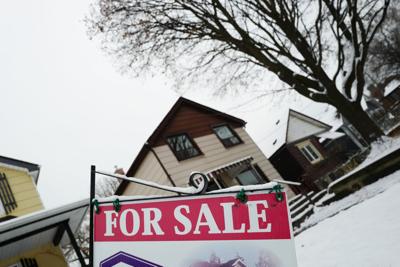╔ź╔ź└▓ is experiencing the largest housing crash since the early 1990s. Prices are down 20 per cent from their 2022 peak, and 5 per cent lower than this time last year. For some, that sounds like great news. But while lower home prices are fantastic for affordability, they are also putting jobs and tax revenue at risk.
Although it is painful for current homebuyers, particularly those who have purchased in the past few years, home prices must fall. The GTA has some of the highest home prices relative to income in the world, with single-family home prices 11 times middle-class family incomes. Ten years ago, when interest rates were lower than they are today, this ratio was less than eight. Twenty years ago, it was less than six, and the traditional wisdom is that families should not buy homes that exceed three times their income. There is no pathway to a prosperous ╔ź╔ź└▓ middle class without lower home prices.
The downside to lower home prices is that they put new housing construction at risk. There is a price below which it simply becomes unviable to build, for both for-profit and not-for-profit developers alike. We appear to have reached that point. , only 208 new single-family homes and 137 new condo units were sold, not just in ╔ź╔ź└▓, but the entire GTA. That represents a 74 per cent and 91 per cent decline from the 10-year averages. These declines are happening while both the federal and provincial governments have committed to doubling housing starts.
Falling housing starts not only make it more challenging to meet our supply targets, but also have long-term economic consequences. Should , tax revenues would fall by $6.6 billion per year across all orders of government, and up to 41,000 jobs could be lost at a time when ╔ź╔ź└▓ÔÇÖs unemployment rate is already elevated at 9.7%.
╔ź╔ź└▓ appears to be stuck in a paradox. It needs lower home prices, but it also requires more homes, and lower prices make it financially unviable to build that housing.
But there is a path forward which simultaneously allows for lower prices and financially viable construction: homebuilding costs must fall further than prices. Some of this will happen organically; land prices typically fall in periods of low demand for homebuilding. However, other costs are either unlikely to fall, such as the cost of raw materials, or those we would prefer not to see fall, like the wages of tradespeople. And thatÔÇÖs before we even consider the unpredictable nature of our trading relationship with the United States.
While governments cannot directly control the price of copper wire or lumber, they can change the taxes and fees on new homebuilding. Municipal development charges can cost hundreds of thousands of dollars to the cost of a new home. While reducing these charges does come at a fiscal cost to governments, so to does inaction, as the current homebuilding slump Ontario municipal governments over $2 billion in development charge revenue each year. Last year, Vaughan Mayor Stephen Del Duca cut development charges, as he recognized they were at levels that were limiting homebuilding, stating he would rather ÔÇťwe get half of something than 100 per cent of nothing.ÔÇŁ ItÔÇÖs a lesson all municipalities could learn.
If development charges amount to a tax, there is also the more plain issue of sales tax on homes itself. The HST also adds nearly 13 per cent to the cost of newly constructed homes, a cost that is not borne by the sale of existing homes, nor by purpose-built rentals since . While provincial and federal rebate programs exist, they have not been adjusted for inflation in decades, with homes priced over $450,000 being ineligible for a federal rebate, as the program is based on Updating these programs for inflation would lower the cost of new housing, boosting construction, while not stimulating demand for existing housing, as the purchase of those homes are not subject to HST and are ineligible for a rebate.
Governments have a challenging path ahead, simultaneously needing lower home prices and more homes to be built. While the solutions to these challenges have an associated fiscal cost, so too does the cost of inaction.
Correction — July 10, 2025
This article has been updated. House prices are down 20 per cent from their 2022 peak, not 30 per cent as previously reported.
Error! Sorry, there was an error processing your request.
There was a problem with the recaptcha. Please try again.
You may unsubscribe at any time. By signing up, you agree to our and . This site is protected by reCAPTCHA and the Google and apply.
Want more of the latest from us? Sign up for more at our newsletter page.



























To join the conversation set a first and last name in your user profile.
Sign in or register for free to join the Conversation